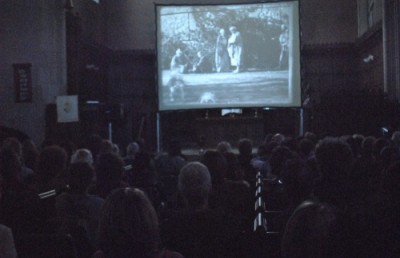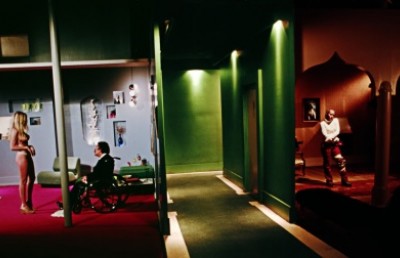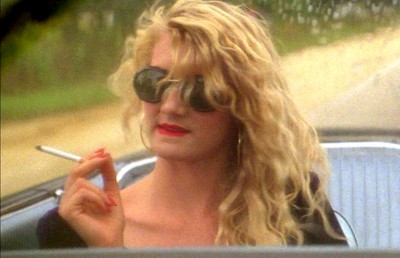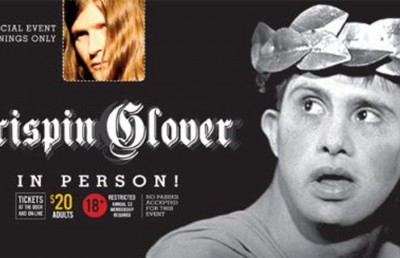Blue Velvet (David Lynch, 1986): We Live in a “Strange World”
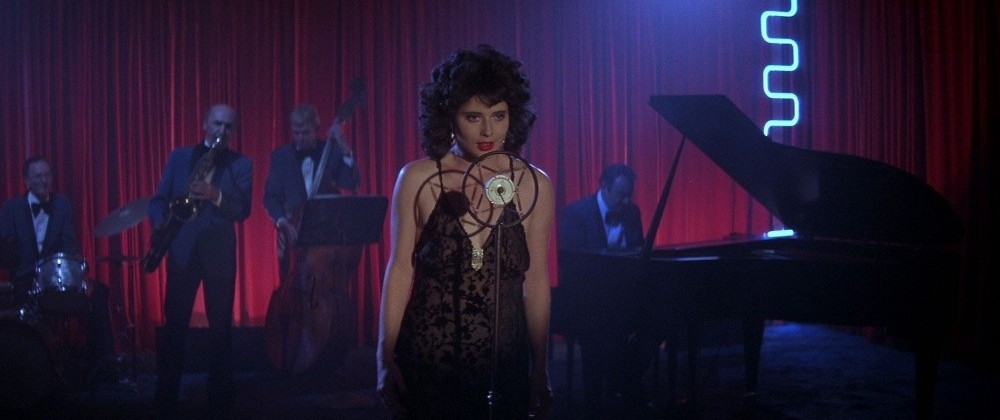
Blue Velvet (1986) is a stylized film written and directed by David Lynch. Immediately on its release, it became a controversial piece of film-work; so offensively disgusting to some people that they walked out of the theaters where it is shown. Lynch is an important figure in the world of independent cinema, but is also a filmmaker who sometimes receives his financing from the major studios. His first feature was Eraserhead (1976), a film made in Los Angeles with the support of the American Film Institute Center for Advanced Film Studies (AFI). It is a shockingly important film of the 1970s and introduces a form of experimental filmmaking that can be denoted as a “personal vision.”
David Lynch is a genuine “surrealist” who makes conscious decisions in the planning, making and editing of his unique brand of cinema; indeed, a modus operandi that is not conducive to surrealist filmmaking. Traditionally, surrealist cinema attempts to negate the process of filmmaking with the power of the unconscious where events and situations happen and develop by “chance” (or more by “quasi-chance”). While the earlier surrealists —beginning in the 1920s with the Freudian ideas of sexuality linked to the unconscious— talk about the libidinal aneurism of an impulse similar to “automatic writing,” the later surrealists, such as Lynch, do not necessarily function from the sources of dreams even though some still do. As mentioned above, the Lynchean form of surrealism is akin to a process level where everything becomes a contingency. In the 1960s, William S. Burroughs’ collages express emotions and ideas in apparently random order; and more recently, Seattle’s Kurt Cobain of the band Nirvana composes “grungy music” of a fortuitous nature. But let’s not get carried away by the probabilistic because Lynch’s films do allude to “aneurism” as evidenced in Blue Velvet with Dean Stockwell’s lip-sync of Roy Orbison’s “In Dreams” or in Mulholland Drive (2001), where the Rebecca Del Rio character performs an imitation of the singing of Orbison’s song “Crying” but this time in the Romance language of Spain.
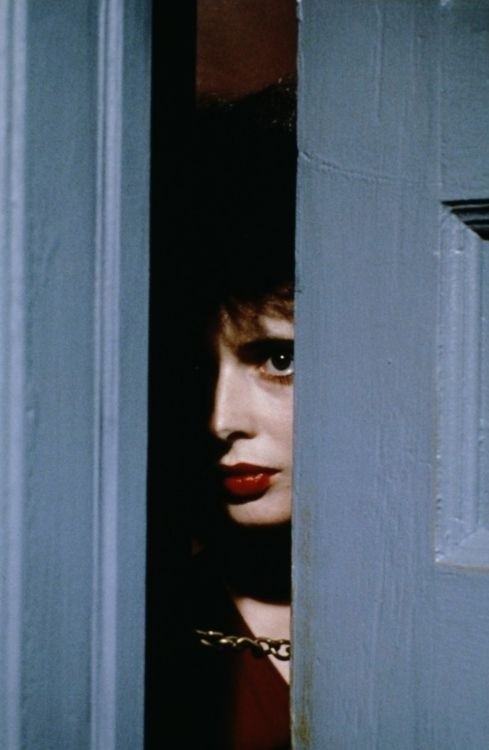
The following questions can be posed, first, by asking how does chance (nature’s contingencies) and the artist’s psyche (man’s uncertainties lurking in his “conscious-unconscious” mind) relate to filmmaking? And secondly, how does the power of the unconscious work and affect our lives?
David Lynch is interested with things “inside of us” that we do not understand because his art-form explores the dark side of human nature. Lynch (who is also a painter, part-time singer, among other things), as a filmmaker, makes sure that every element of his films work toward creating a certain “mood” and “feeling.” He is interested in a variety of emotions that weave themselves in the subconscious fabric of human impulses, creating a complicated stylistic film system that expresses these particular “moods.” Lynch is not a typical “writer-director” but like Woody Allen, he is involved in all aspects of his films. It is not by accident that in Lynch’s films (strangely enough, his movies deal with contingent manifestations of shadowy archetypes), every cinematic element (e.g. form and content) takes an active role in shifting the weight of meaning from the narrative plot to an emphasis on the mise-en-scene; indeed, he consciously accentuates the chromatic gradients of color and underscores the chiaroscuro of light and shade (just to give a few examples). These creative elements are some of the ways that Lynch creates his unique and personal film world, giving it a good touch of the “avant-garde” and a strong tinge of the “industrial contraption.” But not all is perfect in the Lynchean world of independent filmmaking because even with such strokes of genius (ex. Blue Velvet 1986 and Twin Peaks 1989), [soon to be rebooted for a third season, ed.], it is impossible to predict how the public will react to any film; for instance, Lost Highway (1997) cost $15M to make and lost money.
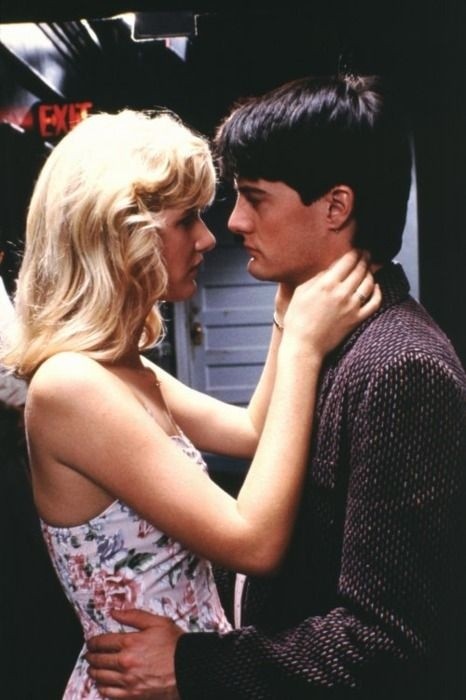
Regardless of the mass response to his films, Lynch always incorporates one very important element in his cinematic recipes, that is, the sensation of what does it feel like to watch a film. He opposes an intellectual approach in favor of the aesthetics of sensation since he is mostly interested in what and how we feel when we (i.e. the spectators) are exposed to audiovisual stimuli. So the queries are: a) how does Lynch investigate the experiential nature of looking at a movie?, b) how do his films make their meanings or how are his characters meaningful?, and c) how are his characters created?
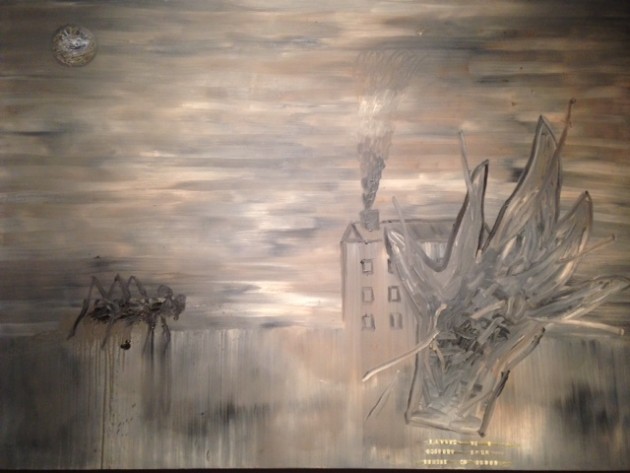
Shadow of a Twisted Hand Across My House
First of all, David Lynch, the director, is also an accomplished painter whose style may be categorized as “postmodern surrealism.” For instance, his oil and mixed media on canvas Shadow of a Twisted Hand Across My House (1988) shows a state of torment represented by strangely disproportionate scale relationships, especially of the huge hand relative to the small house, which express a sense of dread outside the home. Such a painted representation offers evidence of a film artist who does not conceive of narrative as others do, that is, directors who normally think of plot as incidents set in conflicts, driven by actions and leading to crises; nor does Lynch approach characterization in the conventional way of a story driven hero who saves the day and gets the girl at the end of the film. In the same postmodern vein, Lynch utilizes “appropriation” to modulate the story, for instance, he likes to use songs from earlier periods of pop culture (e.g. Roy Orbison’s “In Dreams” in Blue Velvet is found music) and give them “new” meaning within the context of his films, making us aware of ourselves within music and film histories; and as such, his cinema is surreal, postmodern and self-reflexive. His films are atypical and ask for different relationships to be formed in the mind of the viewers; and indeed, they continuously ask the question of how do you feel about this or that thing which you see and hear. Lynchean characterization depends on critical concepts of modern psychology, especially on personality development that leans toward the abnormal, and on aspects of the self that delve into the shadow archetypes of the unconscious. Indeed, his characters are never fully formed in terms of conventional personality development; for instance in Blue Velvet, Lynch investigates both the dark and bright sides of personality, effectively interrogating the moral issues of good and evil, through the characters of Frank Booth (Dennis Hopper) and Jeffrey Beaumont (Kyle MacLachlan), two individuals that “double” as basically one personality (i.e. they are two sides of the same coin). A most significant example of “doubling” occurs when Frank, Jeffrey, Dorothy (Isabella Rossellini), and the remainder of Booth’s party go on a drive at night in the countryside. After stopping in a deserted area, they all get out of the car at which point Frank, covering his mouth with red lipstick, kisses Jeffrey while saying: “Pretty, pretty.” Here, the doubles are truly merging, recalling the earlier moment when Frank says to Jeffrey: “You’re like me.” Now Frank reprises the lyrics of “In Dreams” that are audible in the background as he gets ready to beat up Jeffrey: “You know what a love letter is? It’s a bullet from a fucking gun, fucker. You understand, fucker? I’ll send you straight to hell, fucker. ‘In dreams I talk to you, in dreams I walk with you. In dreams, you’re mine. Forever, in dreams.’”
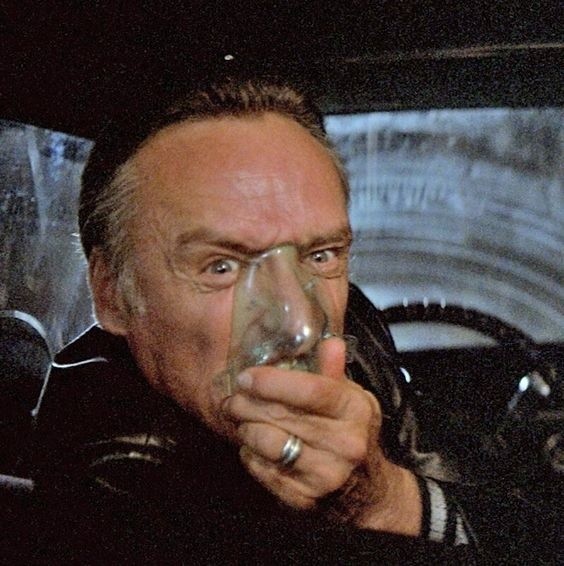
Lynch is a painter-director who works with “film-texture” (e.g. light, sound, mise-en-scene, camera movement, … etc.) and in the style of hybrid genres/subgenres (e.g. 1950s melodrama, mystery and coming-of-age), creating films that look differently for different people. Indeed, Lynch is a little like Andy Warhol in that he makes films not so much as a new film-form (i.e. new art) but as a “new relationship” between the spectator and the film-art that he views. The audience is compelled to negotiate his films in a very different way that represents a postmodern approach to filmmaking (e.g. reworking genre, emphasizing mise-en-scene, studying personality characterism, … etc.). Lynch’s uncompromising “personal vision” is not determined by studio committees, much like Jim Jarmusch and Michael Almereyda; and yet, Lynch is a corporation, a web site, an artist, and a song writer amidst the different levels of the entertainment community.
Blue Velvet (1986) was Lynch’s reward for making Dune (1984) with Dino De Laurentiis, a film adaptation of Frank Hebert’s novel that cost $50M. The former film is an astonishingly controversial $3M production which gives Lynch an Academy Award Nomination for best director. The film works potentially on different levels. First, it functions in the realm of the symbolic narrative, creating a stylized universe of heightened emotions, extreme contrasts and exaggerated characterization. It explores the process of how to construct a film narrative and does it in an ironic way by always calling attention to itself (i.e. besides being non-naturalistic, it is also non-illusional). Moreover, it assumes that the viewers have seen a lot of movies and thus, it calls attention to the codes and conventions of genre (i.e. things that seem “clichés” of other things we’ve already seen); for examples, the dead people and police sirens at the end of Blue Velvet connect to the gangster genre codes while the theme of impossible love, as seen through the extreme tears of Sandy Williams (actress Laura Dern), links back to Douglas Sirk’s 1950s melodramas. Blue Velvet acknowledges the audience’s education of film as a mythic world in our own minds.
Lynch is interested in what art can do, acknowledging the importance of both art and cinema, because they can teach us something about ourselves. He believes in the existence of evil as chaotic forces at work in the world, especially of the primitive impulses that reside within ourselves (e.g. Jeffrey’s surreptitious behavior inside the closet). Lynch acquiesces to the idea of “hiddenness,” believing that there are things hidden in this world and within us. Indeed, he expresses such thoughts cinematically in terms of a system of “duality” because for him, there is always a play of simultaneity of opposites, such as the ostensible views of the surface of things that are ubiquitously superimposed over surreptitiously entropic activities (i.e. benign things we see and those malignant ones we don’t). The film is mythical, depicting a character’s search for knowledge; indeed, Jeffrey is represented as a “searcher” who moves from a condition of innocence to one of experience when he discovers that the world is complicated, dangerous and full of bad things. It is a mythical representation of mainstream, middle America (i.e. the American ideal), a universe that does not really exist. The film promotes the myths of storytelling through which knowledge is gained that leads us to become more wholesome human beings.
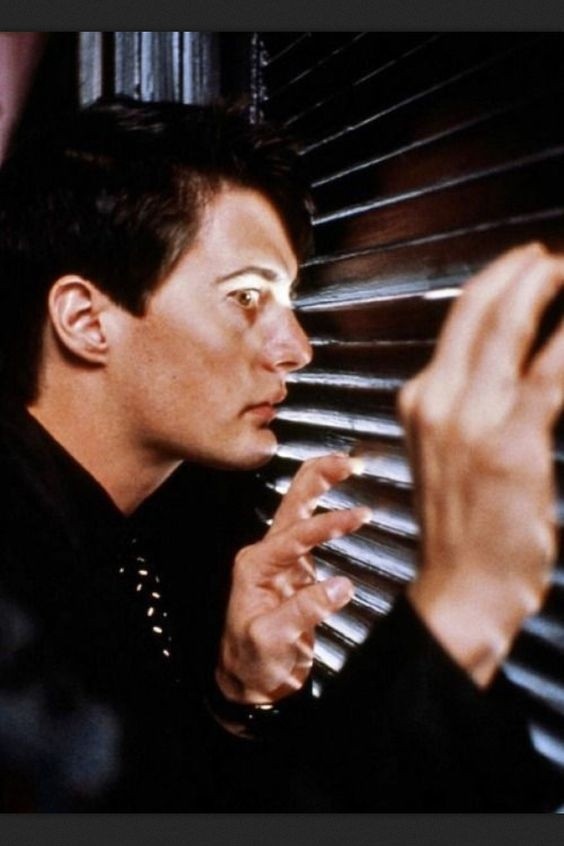
Lynch is a postmodern surrealist who is always trying to understand why and where such dreadful feelings come from, and he does so by taking something that is familiar and making it unfamiliar; thus, he is able to partly break down our conventional ways of seeing and thinking about things (e.g. the shot of the cup, saucer and spoon which are completely covered with fur). Similarly at a higher level, Lynch makes Blue Velvet an aesthetic object that we experience, doing so by taking an ordinary scene that we’ve seen before and altering it to produce a new meaning. For instance, when Jeffrey is being chased by Mike (actor Ken Stovitz), Sandy’s boyfriend, Lynch is giving us a taste of a typical teen movie “cliché” but the twist is that Dorothy (actress Isabella Rossellini) comes out of Jeffrey’s house naked and beaten up which alter our usual understanding of the scene. The film’s interests in the dark impulses of human nature are imaged as a narrative which explores its “noir” elements through mise-en-scene, sound, … etc. Even Alan Splet’s sound design is not in the normal range of easy listening since it contributes to the inherent “doubleness” of the film’s construction. For instance, the innocuous tunes of the 1950s, as exemplified in the title song by Bobby Vinton (i.e. “Blue Velvet”), represent obsessional drives that have to do with sex and violence. The reprise of Orbison’s classic pop song (i.e. “In Dreams”) is the stimulus that triggers Frank’s psychotic behavior which reflects an unbalanced emotional state of mind and the physical need for sexually violent actions. Deftly, Lynch allows Orbison’s lyrics to merge with and pass through Frank’s vocalization of his inner feelings; and thus, he calls attention to the subversive nature of popular music.
Lynch disturbs his audience not only with sound but also with space; in fact, the asymmetrical spaces he chooses are not real but more like the spaces of the imagination. Real or not, these spaces perturb the senses and affect the mind since they mirror the dark spaces of the mind, an unconscious that seems to be always having a dialogue with itself. They allow us to access a certain kind of knowledge (i.e. “hidden” truth) which reflects the darker sides of ourselves. Lynch achieves such narrative explorations through the organics of death and decay (e.g. the extreme close-up world of the lives of bugs) or through the movements of certain objective POVs (e.g. the camera moving into or out of the ear).
Lynch also subverts our ideas of how we perceive the sexes; for examples, in Ben’s apartment where an overweight, half naked woman serves beer to Frank’s little party or, in Dorothy’s apartment where we see her in a state of undress, a representation of a naked female body that is not an idealized image of a fashion model with perfectly slim contours. Lynch also has us interrogate how we perceive normality through the notion of the grotesque; for instance, the dwarf in Twin Peaks (1989) or the crippled dwarf in Mulholland Drive (2001).
Lynch’s cinema is like a “tug-of-war” between the real and the imaginary; indeed, it is what makes up the core of Mulholland Drive. For example, we know the lip-sync of Rebecca Del Rio is fake but it still has the power to move us, implying that there is still something real about it; and the same argument applies to Dean Stockwell’s mimicking of the lyrics of Orbison’s “In Dreams.” Hence, Lynch respects the power of the imagination and the most important things in the world of cinema are ideas…even when not all his ideas work. Nevertheless, his film work is very much about subtext. What is the film really about below the surface of viewing it? In Mulholland Drive, the interrogation probes the “hiddenness” of Hollywood, bringing forth questions about Hollywood; what are our dreams of such a place? Do we really know what goes on in this imaginary world? From such questions, other questions begin to surface. What is the nature of sex? What is our unconscious? Why do people do bad things to other people? It is the artist’s job to penetrate deeper into these mysteries; and to Lynch, there are things in the world that have force, especially haecceity of ideas, because ideas melt into us as well as they emerge from us, they are the quintessential substance that make up our deepest inner selves.
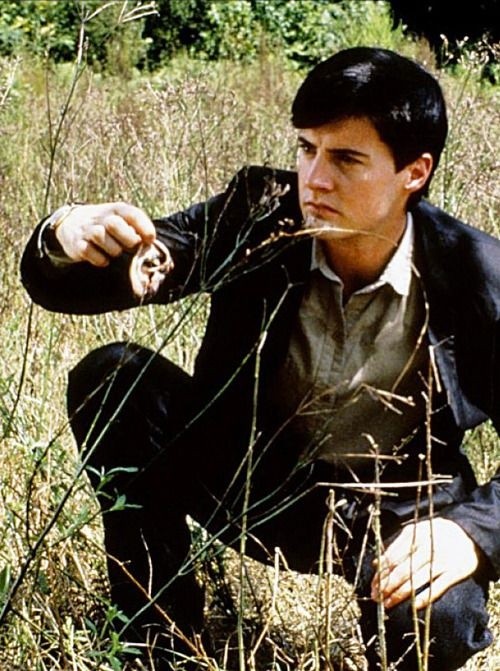
In conclusion, Blue Velvet is a postmodern film utilizing film-genre appropriation, which depends on a stylized construction of mise-en-scene and sound, including the exploration of personality characterism. The film may be thought as a preparation for Twin Peaks, the TV-series. It deals with issues about art, women and cinema, and expresses a strange duality between the beauty in the industrial world and the horror in a natural one. Moreover, Blue Velvet is a physical film as exemplified by the earth pounding oil derricks in Lumberton, North Carolina, or by the vision of the classical tormented painter tortured by his art, raising questions about notions of the human body. As John Cassavetes says: “Your job is just to express yourself as a filmmaker (i.e. don’t try to please other people).” What Cassavetes means is that the best directors are those who follow their own personal vision, and in that way, they are authentically who they are, just as we, the spectators, are the best people we can be (i.e. as viewers) when we observe films as we observe ourselves. Everybody is on a quest for “identity.” And finally, we should not feel bad about not getting all of what Lynch is depicting because there are things in life (and in his films too) that we’ll never really understand. Lynch does not make it easy for us to deal with his characters since he creates them out of his own confusion and tormented life. However, what Jeffrey discovers by the end of Blue Velvet (i.e. about his neighborhood and himself) is that the world is a “strange” place, made up of fragmentary events which once carried meaning and inspiration to the young at heart (i.e. the innocent). He learns with experience that such distinct images and moments in time continuously lose their value because in the end, they are affected by the same processes of death and decay which govern everything else in life, that is, this “strange world” is the great equalizer that eventually makes everything the same.



